1 Learning about disasters
(1) Earthquake
Miyazaki City is one of the areas where seismic activities are most active in Japan.
However, no one knows when an earthquake will happen. To prepare for an earthquake and minimize the damage, be aware of it daily.
- Earthquake magnitude and impact (* Table of Seismic Intensity Levels and their Description from the Japan Meteorological Agency)
[Human experience and behavior, indoor and outdoor conditions]
| Seismic intensity level | Human experience and behavior | Indoor conditions | Outdoor conditions |
|---|---|---|---|
| 0 | People do not feel tremor, but seismographs record it. | N/A | N/A |
| 1 | Some people who are quiet indoors feel a slight tremor. | N/A | N/A |
| 2 | Most people who are quiet indoors feel tremor. Some sleeping people wake up. | Hanging objects, such as lamps, swing slightly. | N/A |
| 3 | Most people indoors feel tremor. Some people who are walking also feel tremor. Most sleeping people wake up. | Tableware on shelves may make noise. | The public power lines swing slightly. |
| 4 | Most people are surprised. Most people walking feel tremor. Most sleeping people wake up. | Hanging objects, such as lamps, swing greatly, and tableware on shelves make noise. Unstable objects may fall over. | The public power lines swing significantly. Some people who are driving a car may notice the tremor. |
| 5-Lower | Most people are frightened and feel like grabbing something. | Hanging objects, such as lamps, swing violently, and tableware on shelves and books on bookshelves may fall off. Unstable objects mostly collapse. Unfixed pieces of furniture may move and unstable ones may fall over. | In rare cases, glass windows may break and fall. You can see that utility poles sway. Roads may be damaged. |
| 5-Upper | Most people have trouble with their behavior, for example, they find it difficult to walk unless they grab something. | Many tableware on the shelves and books on the bookshelves fall off. The TV may fall off the table. Unfixed pieces of furniture may fall over. | Glass windows may break and fall. Unreinforced block walls may collapse. Inadequately installed vending machines may fall over. Some drivers stop their cars because it becomes difficult to drive. |
| 6-Lower0 | It becomes difficult to stand. | Unfixed pieces of furniture mostly move and some fall over. Doors may not open. | Wall tiles and glass windows may break or fall. |
| 6-Upper | You can't stand or travel unless you crawl. Being at the mercy of the tremor, you cannot move and may be blown over. | Many of the unfixed pieces of furniture moves and many fall over. | Many buildings have wall tiles and glass windows damaged or dropped. Most of the unreinforced block walls collapse. |
| 7 | Most unfixed pieces of furniture move, fall over and even jump. | More buildings’ wall tiles and glass windows are damaged or drop. Some reinforced block walls are also damaged. |
[Impact on lifelines and infrastructure]
| Stoppage of gas supply | For a gas meter (microcomputer meter) with a safety, the shutoff device operates in response to seismic tremors with an intensity of approximately 5-Lower or greater to stop the supply of gas. If the tremor is stronger, the gas supply may be stopped for each regional block for safety. |
|---|---|
| Water and power outage | In areas affected by seismic tremors with an intensity of approximately 5-Lower or greater, water and power outage may occur. |
| Railway stoppages, highway usage restrictions, etc. | In the case of seismic tremors with an intensity of approximately 4 or greater, operational suspension, speed regulation, and traffic regulation will be carried out for railways, highways, etc. at the discretion of each business operator for safety confirmation. (Standards for safety confirmation vary depending on the business operator and region) |
| Communication failures, such as telephone | At the time of an earthquake disaster, voice calls are difficult to get through because the number of safety confirmations and inquiries by telephone or the Internet increase in the areas affected by strong tremors and their surrounding areas. To cope with this situation, telecommunications carriers provide services, such as Disaster Emergency Message Dial, Disaster Message Board, etc., in the event of a disaster, such as an earthquake with a seismic intensity of approximately 6-Lower or greater. |
| Elevator stoppage | Elevators with a seismic control device automatically stop for safety in response to seismic tremors with an intensity of approximately 5-Lower or greater. It may take some time to restart operation for reasons including safety confirmation. |
(2) Tsunami
If there is a big earthquake in the ocean, a tsunami may follow. Tsunamis may be higher than expected locally due to coastal topography and other factors.
The force of a tsunami is very strong, and people can be washed away even at a height of 50 cm, which is extremely dangerous.
Tsunamis are very fast, and even if you run away after seeing one, you cannot escape from it. If there is a strong temor or weak tremor for an extended period, or if a tsunami alert or warning is issued on TV or the Internet, evacuate to a safe place immediately.
[Type of tsunami forecast and description and height of tsunami to be announced]
| Class | Expected tsunami height | ||
|---|---|---|---|
| Height class | Announced height | Expression used in a huge earthquake | |
| Large tsunami alert | 10 m - | More than 10 m | Huge |
| 5 m - 10 m | 10 m | ||
| 3 m - 5 m | 5 m | ||
| Tsunami alert | 1 m - 3 m | 3 m | High |
| Tsunami warning | 0.2 m - 1 m | 1 m | (Not expressed) |
(3) Typhoon
During a typhoon, various things may fly, hit and fall due to wind, causing an accident. You should take safety measures before the typhoon comes. The outer walls should be reinforced on a regular basis.
[Countermeasures against strong winds and heavy rain]
- Reinforcing shutters and roofs
- Cover gaps with a board etc.
- Reinforce cracks and tears on roof tiles with wires.
- Fix the antenna firmly. - Reinforcing glass windows, etc.
- In order to withstand flying objects and wind pressure, cover it with boards from the outside or attach duct tape to reinforce the window.
- Draw a curtain inside to help catch flying glass pieces. - Inspecting the area around your house
- Bring things indoors that are likely to be blown away or fix them firmly.
- Firmly fix propane gas cylinders, potted plants, laundry poles, etc. - Reinforcing block walls and outer walls
- If there are cracks, repair them. - If you are worried about inundation, move your home furnishings to a safe place.
(4) Wind and flood damage and sediment disasters
Major disasters caused by typhoons and torrential rains include floods, inundation, and sediment disasters. In recent years, torrential rains flooded urban sewers into houses and caused drowning in underground malls. No matter where you live, you should listen to weather information and be alert to disasters.
[1] Wind and flood damage - Wind strength and possible damage (Created with reference to the materials of the Japan Meteorological Agency)
| Average wind speed (m/sec) | Forecast term | State of the tree | Possible damage |
|---|---|---|---|
| 10 - 15 m/sec | Slightly strong wind | The whole tree shakes. Audible sound of swinging public power lines. | It becomes difficult to walk against the wind. |
| 15 - 20 m/sec | Strong wind | Twigs break. | Some people fall over. |
| 20 - 25 m/sec | Very strong wind (Storm) | The same as above. | Something blown by the wind breaks glass windows. |
| 25 - 30 m/sec | Very strong wind (Storm) | Trees start to be uprooted. | Unable to stand. Outdoor activities are dangerous. |
| 30 m/sec - | Fierce wind | The same as above. | Roofs are blown off and some wooden houses are completely destroyed. |
[2] Rain intensity and possible damage (Created with reference to the materials of the Japan Meteorological Agency)
| Rainfall per hour | Forecast term | Possible damage |
|---|---|---|
| 10 - 20 mm | Slightly heavy rain | Rain bounces off the ground and gets your feet wet. |
| 20 - 30 mm | Heavy rain | You get wet even with an umbrella. |
| 30 - 50 mm | Intense rain | The road becomes like a river. |
| 50 - 80 mm | Very intense rain | Driving a car is dangerous. Many disasters occur. |
| 80 mm - | Torrential rain | There is a high risk of large-scale disasters. |
[3] Types of sediment disasters
Sediment disasters occur suddenly and take away many lives and property in a moment with tremendous destructive power. They can be roughly divided into three types: Mud and rock slide, landslide, and debris flow.
A. Mud and rock slide/mountain landslide
Moisture that soaked into the ground weakens the resistance of the soil and causes the weakened slope to suddenly collapse. This type of sediment disaster is the most common in Japan and occurs near people’s houses, resulting in a lot of victims who failed to evacuate in a timely manner.
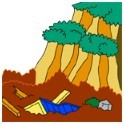
B. Landslide
A phenomenon in which heavy rain falls on fragile land and the loosened slope partially moves downward due to the influence of groundwater and gravity. It occurs over a wide area at one time, causing significant damage to houses, roads, railways, etc.
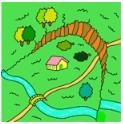
C. Debris flow
Soil, stones, sand, etc. accumulated in valleys and slopes flow out at once with water from heavy rain. With its immense power and overwhelming speed, it swallows and destroys things in the direction of travel one after another.
2 If a disaster occurs
(1) Collecting disaster information
[1] Miyazaki City website (English / Chinese / Korean / Easy Japanese)
Information on disasters, such as earthquakes and typhoons, in Miyazaki City, as well as on disaster preparedness, is posted, so please check it.
[2] Miyazaki City disaster prevention email (English/Chinese/Korean/Vietnamese/Nepali/Easy Japanese)
[Registration method]
A. Scan the following QR Code using your smartphone or enter the email address into your email directly, and send a blank email.
QR code for registration:
[English][email protected]
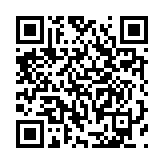
[中文(简体)][email protected]
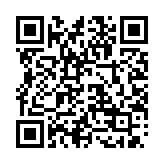
[中文(繁体)][email protected]
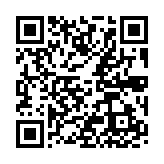
[한국어][email protected]
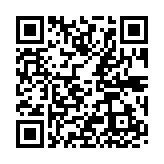
[Tiếng Việt][email protected]
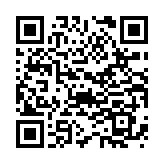
[नेपाली][email protected]
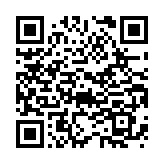
[やさしいにほんご][email protected]
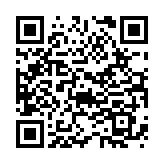
B. When you receive the registration email, click on the URL at the end of the email.
*If you do not receive an email, check your spam settings.
C. Check that the registered email is correct and then click the "next" button.
D. Click the "register" button and after receiving the "mail service registration complete email," registration is complete.
[3] Yahoo! Disaster Prevention Application (Japanese only)
You will receive emergency disaster prevention information from the city through push notification just by specifying “Miyazaki City” as a notification target area.
[Downloadable from:]
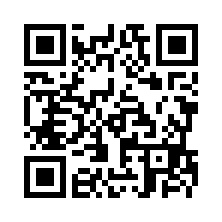
iPhone / iPad
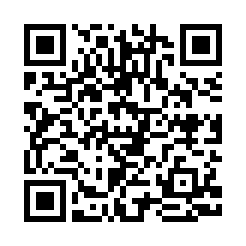
Android
[4] Disaster prevention application “National Evacuation Shelter Guide” (English, Chinese (traditional/simplified) and Korean)
You will receive push notifications about disaster prevention, such as evacuation and weather information at your current location.
This application also provides functions to search for evacuation shelters, register your safety and confirm safety.
[Downloadable from:]
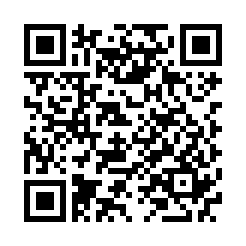
iPhone / iPad
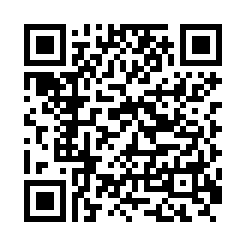
Android
[5] NHK World (multilingual)
This application provides disaster information all over Japan in various languages.
[Application]
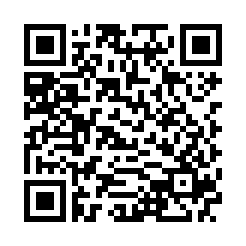
iPhone / iPad
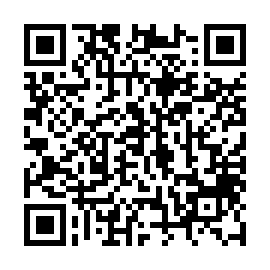
Android
[6] Japan Meteorological Agency website (multilingual)
The JMA provides weather and disaster information all over Japan in various languages.
(2) Evacuation
It is crucial to evacuate immediately according to the evacuation information.
In particular, households with children and the elderly living in dangerous areas, such as disaster-prone areas or near rivers, should evacuate early to avoid moving at night.
[List of alert levels, actions to be taken by residents, evacuation information, etc.]
|
Alert Level |
Condition |
Action that residents should take |
Information that urges residents to take action |
|
5 |
Occurrence or imminent occurrence of disaster |
Life threatening situation. Immediately ensure safety! |
Emergency Safety Measures |
|
〈Always Evacuate by Alert Level 4!〉 |
|||
| 4 |
High risk of disaster |
Everyone should evacuate from dangerous places. |
Evacuation order |
| 3 |
Risk of disaster |
The elderly should evacuate from dangerous places. |
Preparation for evacuation and start of evacuation by the elderly, etc. |
| 2 |
Worsening weather conditions |
Confirm your own evacuation actions in preparation.
|
Flood warning, heavy rain warning, etc. (JMA)
|
| 1 |
Weather conditions may worsen in the near future |
Raise your preparedness for disasters. |
Early warning information (JMA) |
[Precautions for evacuation]
- Carry as little as possible.
- Organize your luggage as much as possible and carry it on your back.
- In strong winds, there is a risk of injury from flying objects. Cover your head with a helmet, disaster prevention hood or cushion.
- No bare feet or boots. Wear athletic shoes that are tied with laces as much as possible.
- For an evacuation route, choose the one that you know and avoid one in a lowland, under a cliff, along a river or on a bridge.
- During a flood, manholes and gutters are dangerous since they are invisible under the water. Use a long stick as a cane to ensure the safety of your feet when moving.
- Be sure to carry a large flashlight after the evening.
(3) Tell your family and friends about your situation
If you cannot reach your family or friends by phone or email, use the following services:
[1] Disaster Emergency Message Dial (171)
A voice message board that can be used in the event of a disaster when voice calls are difficult to get through.
When you call 171, the voice guidance is played, so you can record your message according the guidance or play your recorded message.
[2] Disaster Message Board
By registering your own situation in the event of a disaster, your family or friends can check it from their mobile phones or PCs.
- NTT DoCoMo
- au
- SoftBank Mobile
- Ymobile
- NTT West “Disaster Emergency Message Board (web171)” (How to use)
* NTT West provides “Trial Use Days” for the Disaster Emergency Message Dial 171 and the Disaster Emergency Message Board. You can practice with your family, relatives or friends on a “Trial Use Day.”
[Trial Use Day]
- 1st and 15th of every month: 12:00 a.m. – 12:00 a.m. the following day
- New Year's Day (January 1 to January 3: 12:00 a.m. – 12:00 a.m. the following day)
- Disaster Prevention Week (August 30 to September 5: 9:00 a.m. – 5:00 p.m.)
- Disaster Prevention and Volunteer Week (January 15 to January 21: 9:00 a.m. – 5:00 p.m.)
3 Preparing for disasters
(1) Confirm your evacuation shelter (where to escape) in advance.
Evacuation shelters have two types: “Designated Emergency Evacuation Shelters” and “Designated Evacuation Shelters.”
The “Designated Emergency Evacuation Shelter” is an emergency evacuation facility, including a tsunami evacuation building to escape from a tsunami, or a large area (temporary evacuation shelter) to which people evaluate temporarily in the event of an earthquake.
The “Designated Evacuation Shelter” is a place where evacuated residents stay for a required period until the risk of a disaster subsides or residents who cannot return to their homes due to a disaster live.
The Designated Emergency Evacuation Shelters and Designated Evacuation Shelters have a sign with a symbol mark installed. These types of evaluation shelter have different purposes. It is recommended that you actually walk to the nearest shelters with the whole family and find safe and easy-to-access evacuation routes.
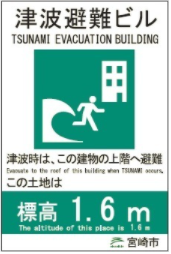
[How to check the evacuation shelter]
If you download the disaster prevention application “National Evacuation Shelter Guide,” you can check the nearby evacuation shelters on the map.
(2) Prepare a stockpile.
In the event of a disaster, lifelines, such as electricity and water, may not function.
In preparation for an emergency, you should prepare food and drinking water for at least 3 days and stockpile them at home so that you can live even if a lifeline is stopped.
You should make sure that you can take out your flashlight, medicines currently being taken, and your medicine notebook (Okusuri Techo) immediately. A leaflet created by Miyazaki Prefecture is also available that helps you prepare items to carry at all times, those to be taken out in an emergency and those to be stockpiled. Please refer to it.
- Disaster Prevention Pamphlet for Foreign Residents (English / Chinese / Korean / Vietnamese)
Decide on how to confirm safety with the family.
In the event of a disaster, mobile phone calls are difficult to get through and you may not be able to contact your family.
You should discuss in advance with your family how to keep in touch in case of emergency, such as using the Disaster Emergency Message Dial 171 or Disaster Message Board.
(4) Check particularly dangerous places in the event of a disaster
- Tsunami hazard map(Japanese only)
- Flood hazard map(multilingual)
- Sediment disaster hazard map(Japanese only)
4 Related links
- Miyazaki Support Center for Foreign Residents
- NHK World
- Japan Meteorological Agency
- Council of Local Authorities for International Relations (CLAIR)
- Miyazaki International Association (Disaster prevention pamphlet for foreign residents) (English / Chinese / Korean)
(Inquiries)※Japanese only
| Crisis Management Department Crisis Management Division TEL : 0985-21-1730 E-mail : [email protected] |

